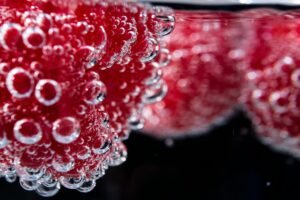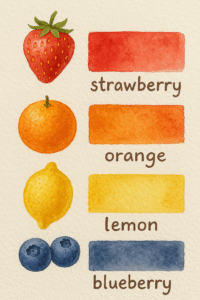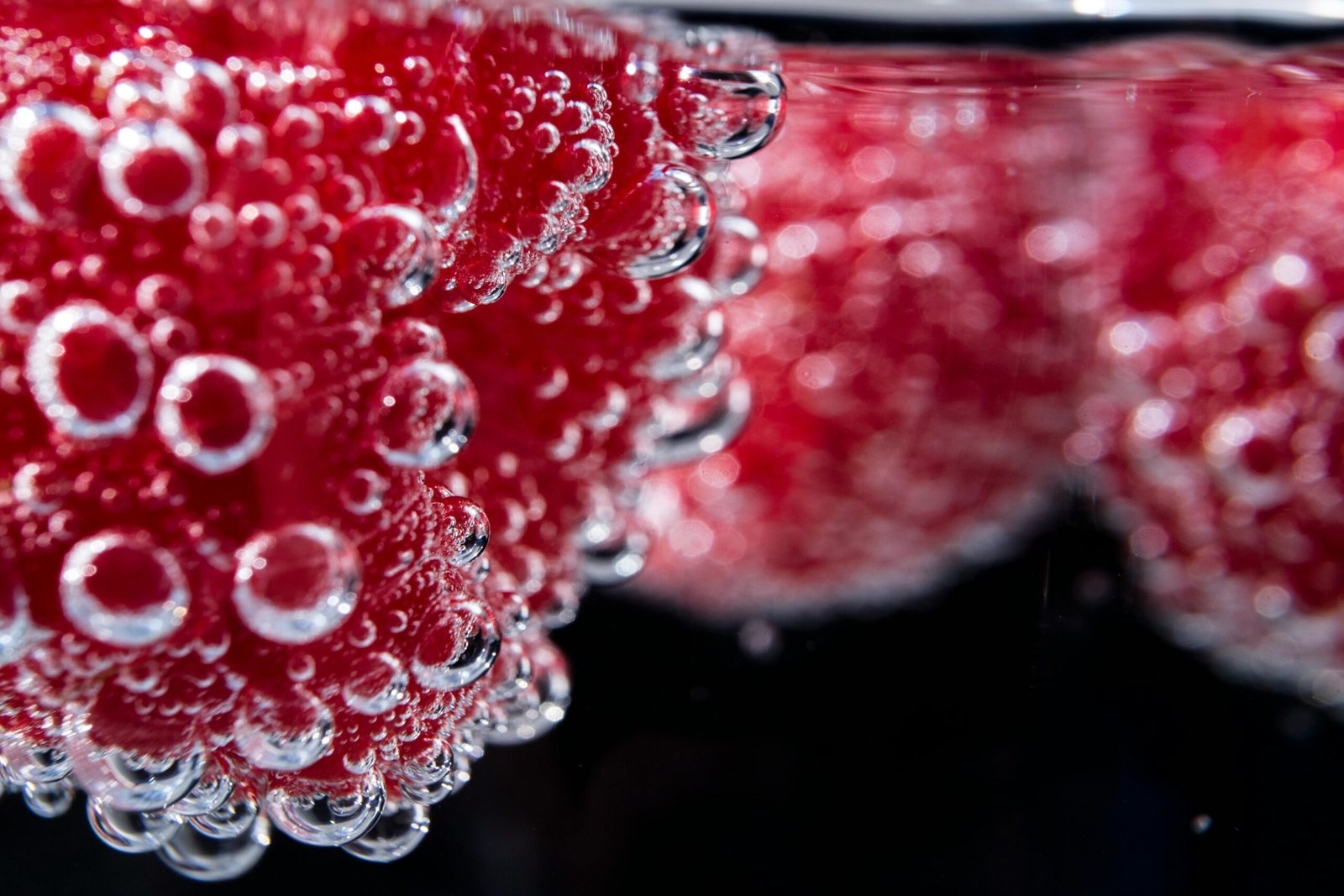What Fruit Can Be Used to Make Water Colors
Fruits are not only delicious but also incredibly useful for natural dyeing.If you’ve ever crushed a berry and watched its juice stain your fingers, what fruit can be used to make water colors then you’ve already experienced a taste of natural pigment. Many fruits can create stunning watercolor paints. Whether you’re crafting with kids or experimenting with eco-friendly art, this approach offers a fun, safe, and sustainable alternative. In this guide, we will explore what fruit can be used to make water colors, how they work, and why this method is gaining popularity among eco-conscious artists.
Why Use Fruits to Make Watercolors
Using fruits for watercolors brings many benefits. These natural pigments are non-toxic, easy to source, and environmentally friendly. Unlike chemical-laden paints, fruit-based watercolors don’t release harmful fumes. Kids and adults alike can safely explore creativity with these homemade colors.
Artists and crafters now prefer natural alternatives. This rise in interest makes fruit-based watercolors a top choice. From blueberries to pomegranates, nature’s palette is more colorful than most imagine.
Best Fruits for Natural Watercolors
Many fruits yield beautiful colors that transfer well to paper. Berries top the list due to their rich, concentrated pigments. Blueberries, blackberries, and raspberries all produce vibrant hues. Their juices can be mashed and filtered to create ready-to-use paint.
Red grapes create soft purples when crushed. Pomegranates offer deep red tones, perfect for painting flowers or abstract shapes. Cherries also give a strong red pigment. These fruits don’t require complex processes, making them ideal for beginners.

In contrast, citrus fruits like lemons and oranges don’t produce strong colors. Instead, they serve well as natural binders or to alter pH levels. Changing pH can enhance or shift other fruit colors. This interaction deepens the artistic process.
How to Make Watercolors with Fruit
The method is simple. Start by mashing your chosen fruit in a bowl. Use a strainer or cheesecloth to separate the juice from the pulp. This juice becomes your pigment base. To turn it into paint, you can mix it with a bit of cornstarch or natural gum arabic. This step thickens the color and helps it adhere to paper.
A few drops of lemon juice help preserve the paint and slightly alter the final tone. You can also try boiling some fruits like blueberries to deepen their colors before extracting juice.
Use small containers to store different shades. Because they are natural, these paints won’t last forever. Keep them in the fridge and use them within a few days for the best results.
Common Colors from Specific Fruits
Blueberries give a soft violet or blue shade. The more you concentrate the juice, the darker the pigment becomes. Blackberries deliver a rich magenta hue, while raspberries provide lighter reds and pinks. Cherries result in bold reds, and grapes lean toward lavender or light purple.
If you want orange or yellow, mango skin and turmeric work well when combined with citrus juice. Though turmeric is a root and not a fruit, it blends well with fruity solutions.
You may also try elderberries, which offer a unique blend of blue and purple. If left exposed to air, these shades darken and give a moody feel to your artwork.
Advantages of Fruit-Based Paints
Fruit-based paints are safe, especially for children. Their non-toxic nature makes them a great tool for sensory play and early education. Parents and teachers appreciate how these colors double as both art and science.
Another advantage is their sustainability. You can repurpose overripe fruits instead of throwing them away. This not only reduces waste but encourages creativity. Artists find joy in making paint from what nature offers.
These paints also provide a unique texture. Unlike synthetic watercolors, fruit-based paints create organic patterns and drying effects. No two strokes are exactly alike. This unpredictability adds charm to every piece.
Storage and Shelf Life
Natural fruit colors don’t last as long as synthetic paints. Without preservatives, their shelf life is short. Refrigeration helps extend usability to a few days or up to a week. Adding lemon juice or vinegar can slow bacterial growth. However, the best results come from using them fresh.
Some users freeze juice in ice cube trays. This allows you to thaw small portions when needed. It’s an easy way to preserve excess pigment while reducing waste.
How to Use Fruit Paints in Art
These paints work well for light watercolor illustrations. Use them for greeting cards, journal art, wall hangings, and children’s projects. Because the colors are subtle, they add a soft, earthy feel to artwork.
Layering is key. Apply thin washes and let them dry before adding more. This approach builds depth and enhances color strength. Avoid using too much water as it can dilute the pigment.

They also suit mixed media projects. Combine with natural materials like leaves, twigs, or dried flowers. These combinations make your artwork even more organic and beautiful.
Safety and Skin Contact
Because fruit-based paints are edible, they are entirely safe for skin contact. Children can finger paint without any risk. However, allergies still matter. Always check for fruit allergies before use, especially in group settings.
Also, these paints may stain clothes. Using aprons or old shirts helps prevent messes. Clean-up remains easy with water and mild soap.
Sustainable Creativity for the Future
Eco-friendly art supplies are no longer a trend—they’re a necessity. Our planet faces mounting waste and pollution. Artists are stepping up by using natural resources wisely. Fruit-based paints represent a small but powerful shift toward conscious creativity.
Parents who introduce kids to natural paints plant early seeds of environmental awareness. Schools that adopt such practices help foster the next generation of sustainable thinkers.
Related Topics You Might Enjoy
You can explore how to make paint from vegetables for even more natural color ideas. Some vegetables like spinach and beetroot yield great results. For long-term painting solutions, check out how plant-based inks are revolutionizing eco printing.
You can also visit our article on printable fruits and vegetables to combine real art with fun educational activities. These printable guides pair perfectly with fruit-based watercolor projects.
For DIY enthusiasts, tutorials on natural dyeing with avocado pits or onion skins offer additional inspiration.
FAQs About Making Watercolors from Fruits
Can all fruits be used for making watercolors?
Not all fruits are suitable. Only those with strong pigments like berries, cherries, and grapes work well. Others may lack color strength or dry poorly on paper.
How long do homemade fruit watercolors last?
They typically last up to one week when refrigerated. Use lemon juice to extend their life slightly. Fresh use ensures the best vibrancy.
Can I mix fruit juices to create new colors?
Yes, mixing juices creates new shades. Try blending blueberry with raspberry for a purple-pink hue. Experimenting with combinations enhances your creativity.
Are these paints safe for toddlers?
Absolutely. Since the paints are made from edible fruits, they’re safe for all ages. Just ensure no fruit allergies are present before use.
What type of paper works best?
Thicker watercolor paper handles fruit paint better. It absorbs the juice and reduces warping. Thin paper may tear or become soggy.
Do fruit-based colors fade over time?
Yes, natural pigments tend to fade when exposed to sunlight. Keep finished artwork away from direct UV light. For longevity, consider framing behind UV glass.
Final Thoughts
Exploring what fruit can be used to make water colors brings joy, creativity, and sustainability into your life. These vibrant, safe, and natural options prove that art doesn’t need synthetic chemicals. By choosing nature’s colors, you engage in a fun, hands-on learning experience. Plus, you take a step toward eco-conscious living.
Start simple. Grab some berries, mash them, and create your next masterpiece with the magic of fruit. Whether you’re a parent, teacher, or artist, natural watercolors made from fruit offer beauty without compromise.
For more natural craft ideas, visit National Geographic Kids DIY. Their guides inspire young minds to connect with nature through creativity.
